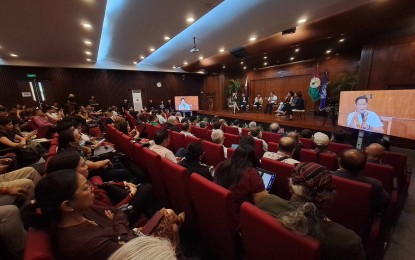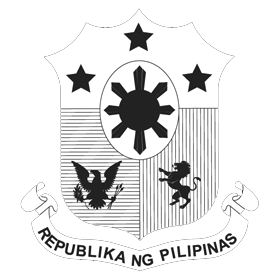
SERVE BETTER. University of the Philippines (UP) President Angelo Jimenez speaks during a panel discussion at the Malcolm Hall Auditorium of the UP College of Law in Diliman, Quezon City on Tuesday (June 18, 2024). Jimenez unveiled UP’s 10 flagship programs seeking to truly serve the people. (Photo from UP Facebook page)
MANILA – University of the Philippines (UP) President Angelo Jimenez on Tuesday unveiled the 10 flagship programs under his Strategic Plan 2023-2029 as part of the school’s weeklong celebration of its 116th founding anniversary.
The flagship programs include academic excellence; inclusive admissions; research and innovation; Open Distance e-Learning (ODeL); Archipelagic and Oceanic Virtual University (AOVU); active and collaborative partnerships; arts and culture; expansion of public service offices; Quality Management System (QMS) and Quality Assurance (QA); and digital transformation.
During a panel discussion at the Malcolm Hall Auditorium of the UP College of Law in Diliman, Quezon City, Jimenez emphasized his commitment to instilling a sense of service among students.
“Oblation is to oblate, to offer yourself. That naked man out there, it has been the most powerful symbol of UP and it has never changed ever since. What I really wanted to do is come up with a program wherein our students gain direct experience with service and are enlightened by it, ennobled by it, enriched by it. This is a challenge,” Jimenez said.
“My goal is for UP to truly serve the people by ensuring that we not only strengthen our academic capacities as a leading national and global university but also look beyond the traditional confines of the academe and work towards national development and social justice,” he added.
To enhance inclusivity, Jimenez said UP would continue implementing an equity factor in assessing applicants from socio-economically disadvantaged and geographically underrepresented areas.
Jimenez highlighted the diversity of UP's student body, noting that 44 percent come from private schools, 27 percent from public science high schools, and 29 percent from public high schools.
He also pointed out the significant disparity among admitted students from different provinces.
“This year’s UPCAT (College Admission Test) cohort, UP is admitting 10,000 students wherein 5,500 are from the National Capital Region and only 33 from BARMM (Bangsamoro Autonomous Region In Muslim Mindanao), which is the poorest region of the country,” Jimenez said.
Jimenez said UP has allocated up to PHP100,000 each year per student from geographically isolated and disadvantaged areas (GIDA) to address the concern that around 60 percent of passers hesitate to enroll due to financial constraints.
“We have a program called Lingap Iskolar for that and we have identified about 340 students to provide full educational support, including food, dorms, communication allowance, and transportation allowance. We are starting with 350 students from GIDA areas, from the poorest families in the country,” Jimenez said.
“If everyone cannot come to UP, then UP must go where it can help raise academic standards, contribute to development at the local and national level, and provide resources to strengthen not only other educational institutions but the Philippines as a whole,” he added. (PNA)
 The Philippine News Agency is a web-based newswire service of the Philippine government under the supervision of the News and Information Bureau (NIB) of the Presidential Communications Office (PCO).
The Philippine News Agency is a web-based newswire service of the Philippine government under the supervision of the News and Information Bureau (NIB) of the Presidential Communications Office (PCO).